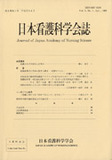Japanese
English
- 販売していません
- Abstract 文献概要
- 参考文献 Reference
要約
手術患者の個別呼吸練習プログラム作成の基礎資料とするため,経皮的血液ガスモニターを用い成人女子健常者10名を対象として,努力呼吸法(Incentive Spirometry)の呼吸,循環への影響を検討した.
その結果,1)tcPO2は,呼吸練習直後より上昇し,終了後数秒から1分以内に最高値に達したあと急激に低下し,安静時に比べ10~20mmHg下降した.2)tcPCO2は,呼吸練習直後より下降し(10mmHg以内),練習後も安静時値よりの上昇はほとんど無かった.3)循環への影響は,PRP増加率が練習直後で10%以内で,終了5分後には安静時値へ戻った.4)ISは深呼吸に比べ,循環器系への影響が少なく,練習意欲の面からも効果的と言える.5)経皮的血液ガスモニターは,手術患者の呼吸練習の評価器具として適している,などが明らかになった.
Abstract
The purpose of this study is to prevent postoperative pulmonary complication based on individual respitatory training exercises.
Ten healthy women were investigated about dynamics of respiration and circulation under Incentive Spirometry (IS) using Transcutaneous Measurement of P02 tension (tcPO2) and PCO2 tension (tcPCO2).
The following results were obtained;
1. TcP02 value rised immediatery after respiratory training exercises, reaching the maximum value within one minute, and descending suddenly about 10-20mmHg comparing at rest.
2. TcPCO2 value descended about 10mm Hg immediately after respiratory training exercises.
3. It can be considered that circulation is not affected very much under IS, because the rate of increased PRP is less than 10% after training exercises.
4. IS is more effective than Deep Breath from the view points of circulation and the motive for training exercises.
5. Transcutaneous Measurement of PO2 & PCO2 is one of useful methods to evaluate respiratory training exercises for patients before operation.
Copyright © 1989, Japan Academy of Nursing Science. All rights reserved.


